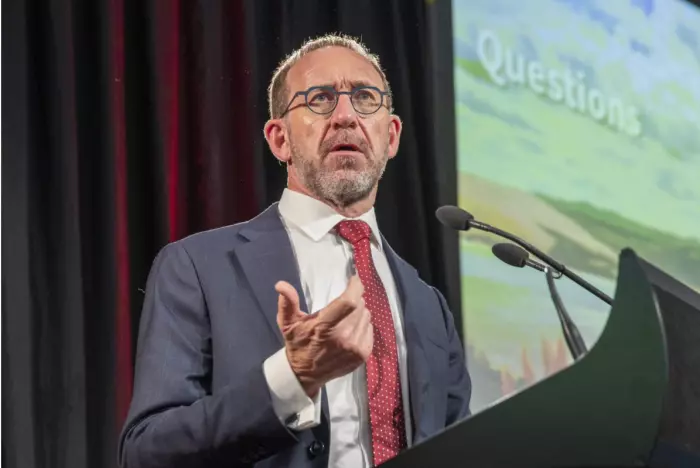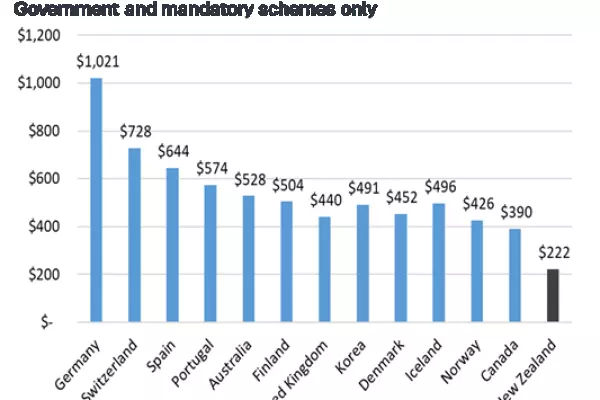“Instinctively, I don't like the idea of people's ill-health being the source of profit to others.”
Health minister Andrew Little is happy to explain his ideological impulses in a wide-ranging interview with BusinessDesk. But, since his job includes overseeing billions spent on non-state suppliers, there are many such profit-makers that he “accepts”.
“Whether it's GPs, whether it's private hospitals, whether it's residential care, the nominally private part of health is significant.
"We need it. We need all the beds, and all the services that they operate, so that won't change in a hurry," he said.
“If we were to say 'Well, actually, it would be better if they were all fully managed by public organisations', we just couldn’t do it at the moment.
"So, we just accept the mix that we've got at the moment."
An examination of the private sector’s involvement in healthcare is central to our newly-launched investigative series ‘The Business of Health’.
It's a project Little supports, because “there are some people who are doing very well out of health”.
Naturally, the tide of funding mainly originates with central government.
“The private health sector is heavily dependent on what it earns from the state," Little said. "There are not many parts of the health sector, public and private, that don't have a significant input of the public dollar.
“There are people whose work is in the health sector, and who generate pretty healthy revenue. That is true. I make no judgment about that.
"It is what it is."
Pending spending
There’s no doubt that the Labour government has turned on the funding taps, with a 40% increase in annual core crown spending on health in 2021 compared with 2017.
But with blistering criticisms of the ministry’s inefficient procurement practices, an investigation of covid-era procurement by the auditor general and hefty sums put towards centralisation reforms, is he confident this increased budget is being spent well?
“I can't put my hand on my heart and say I can totally guarantee that there's good-quality spending right across the board.
"I'm pretty sure that within the $24 billion budget, right at the moment, there will be areas that we can do better-quality spending, get some efficiencies and put them back into frontline health.
“Can I be sure that the eyes are being run over every renewal of every third-party contract to every health-service provider?
"No, but my expectation is that we will have a system that will better enable us to do that in a matter of two or three years' time, but it will take us time to get the processes set up."
Little argues the disestablishment of the 20 regional District Health Boards (DHBs) into Te Whatu Ora – Health New Zealand, will provide consistency and reduce “transaction costs in order to get reasonably simple things done”.
Across the DHB network, he said a lot of things were "just rolled over” when it came to contracting suppliers.
“So, not a lot of scrutiny necessarily into: are we getting what we paid for? Do we even need this any more? Are there other ways we can do it?
"So, I think there is a big job of work to do to provide some very close scrutiny of all those contracts.”
Although, he admitted: “To be honest, I couldn’t tell you the quality of procurement. Apart from what I hear anecdotally.”
‘Legitimate criticism’
Despite the funding commitments, neither patients nor practitioners are happy right now.
Emergency department horror stories continue to emerge, nurses are yet to accept a pay deal and primary-care providers are complaining of getting a far lower rate of funding increase compared with hospitals.
Is it disheartening to see this criticism, when he’s adamant that funding has increased significantly?
“I don't want to be unkind about anybody in the health sector. But it’s pretty much a daily occurrence that someone puts their hand up to say ‘we need more funding for x’.
“I think, to an extent, underpinning that criticism is that, whenever we do a big set of increases in funding, so much of it gets absorbed in the hospital end of the system, in the most expensive end of the system.”
Dollar-for-dollar, he accepts that investment in primary care “if it leads to more GPs, nurse practitioners, nurses and others, is more likely to have a bigger impact than ploughing even more dollars into the hospital system”.
“That is a legitimate criticism, that is something that I intend that we address over time, and that's part of the reforms, to put a greater emphasis on primary care."
Part of the challenge is distributing the workload.
“GPs have this thing that they should be doing everything,” he said. "They don't need to be doing everything. There are other health professionals we can rely on to do stuff.
“There are things that pharmacists can do that you shouldn't need to have to go to a doctor for, like minor ailments and skin ailments.”
Throughout BusinessDesk's sit-down interview, Little spoke about increasing the workforce.
This year, his department has announced a number of initiatives aimed at recruiting and retaining doctors and nurses.
But it’s an uphill battle when it’s being reported that nurses can earn significantly more across the Tasman and the Victoria state government is directly targeting Kiwi nurses for mental-health roles.
Little argued that this is a global problem.
“The labour market for health workers generally – specialists, doctors and nurses – is very competitive. The shortages and the inward forces are chronic and acute. So, everybody is doing what they can to recruit how they can to fill those gaps. So, I’m sure the Aussies will.
“Health workers going to Australia need to know that they're going into a health system that is probably more understaffed than ours. They should be going in with eyes wide open,” he warned.
With many health outcome metrics worsening, is he frustrated that the potential improvements may not register with voters in the year leading up to an election?
Reforms were planned to be implemented sooner, he said, but “it was a pretty diabolical winter".
"And I said, we don't want to do the organisational change that is going to just cause more disruption and stress on an already stressed workforce. So, it is about picking the time to make a change.
“I would say over the next six months we will start to see more discernible change.”















